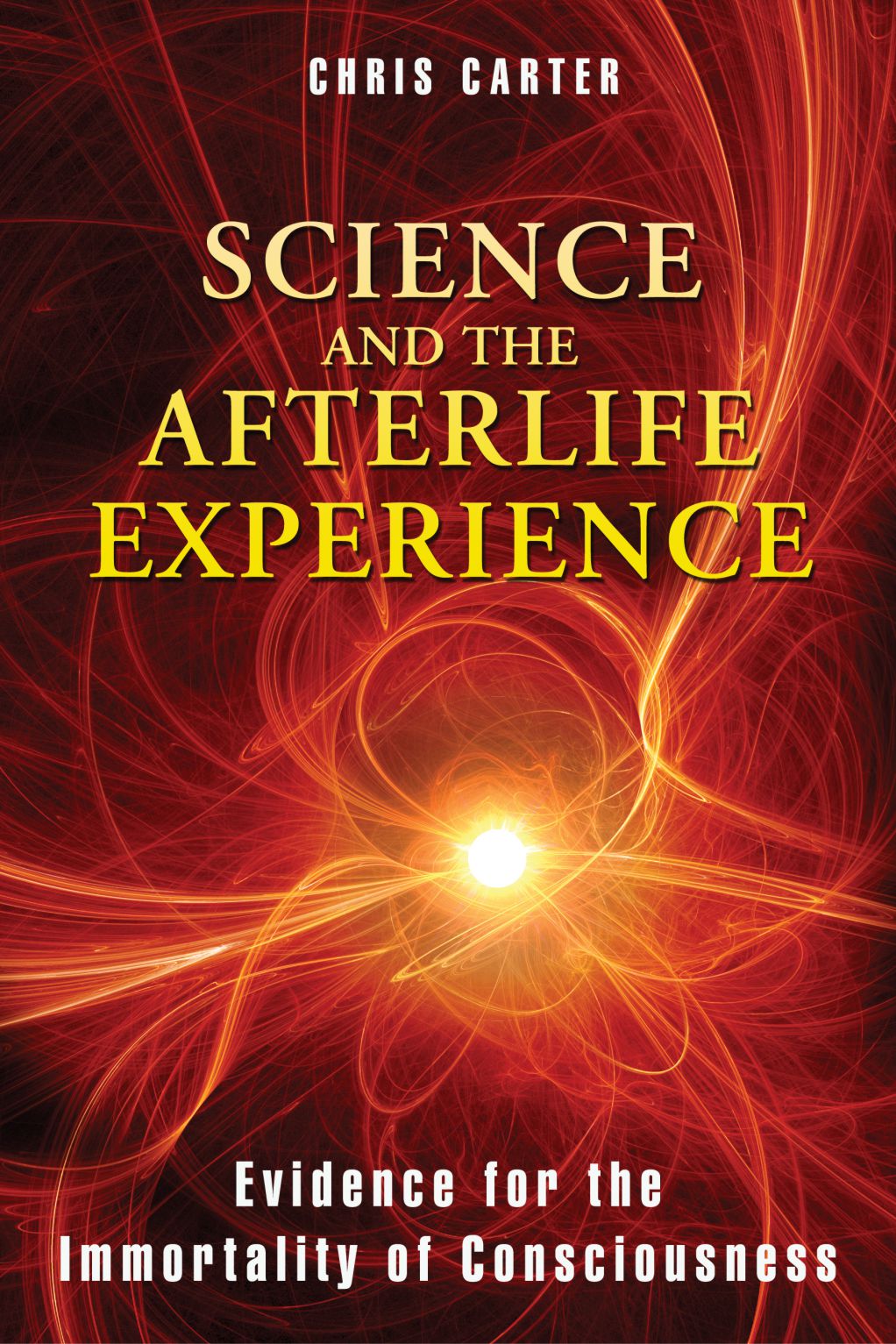Near Death Experiences
One phenomenon that would seem to be able to shed light on the relationship between mind and body is the NDE. Many individuals, when faced with a life-threatening emergency, have reported strange experiences in which they claim to have left their bodies, entered a tunnel leading to another realm of existence and there encountered deceased relatives or a mysterious‘ being of light’. After being turned back – or deciding to go back – they suddenly find themselves back in their bodies, often with resuscitation efforts in full swing.
Reports of NDEs come from people who have survived life-threatening accidents or illnesses. NDEs have also occasionally been reported by those who only perceived their lives to be under threat, but there are also many reports from individuals who did not expect to die, either because the accident or illness was sudden and unexpected or because the NDE occurred during an operation they fully expected to survive.
How common is the NDE? The estimates vary widely. Kenneth Ring estimates that about 30 per cent of those individuals who come close to death report an NDE, and his estimate closely matches the 27 per cent found in cardiologist Michael Sabom’s sample. But an English study of 63 survivors of cardiac arrest found that only about 10 per cent experienced an NDE; a larger Dutch study of 344 patients found that although 12 per cent reported a deep NDE, after adjusting for multiple crisis events (several of the patients had experienced more than one cardiac arrest), the researchers estimated the true frequency of the reported experience to be about five per cent. The actual frequency of the remembered experience remains unknown and may depend on the nature of the life-threatening trauma.
Fragmentary accounts of the NDE have appeared in the art and literature from all ages,[1] but it is only recently that these reports have been gathered and analysed in a systematic manner. Before turning to the contemporary reports, let us first examine an older case.
- S. Wiltse, a physician, contracted typhoid fever in 1889 and was considered dead by everyone at the bedside, including a physician who failed to evoke a response by jabbing a needle into Wiltse’s body. The case was investigated by Frederic Myers and Edmund Gurney of the British Society for Psychical Research. Myers and Gurney obtained sworn testimony on the events that occurred during the four-hour coma, during which Wiltse’s body was without pulse or perceptible heartbeat. He recalls being about to emerge from the body and appearing to himself like a jellyfish in colour and form. He had the sensation of floating up and down and laterally like a soap bubble attached to the end of a pipe until:
I at last broke free from the body… and fell lightly on the floor, where I slowly rose and expanded into the full stature of a man. I seemed to be translucent, of a bluish cast and perfectly naked. As I turned, my elbow came into contact with the arm of one of two gentlemen who were standing in the door. To my surprise his arm passed right through mine without apparent resistance, the severed parts closing again without pain, as air reunites. I looked quickly up at his face to see whether he had noticed the contact but he gave me no sign. I directed my gaze in the direction of his and saw my own dead body. It was lying just as I had taken so much pains to place it, partially on the right side, the feet close together and the hands clasped across the breast. I was surprised at the paleness of the face and saw a number of persons sitting and standing about the body… and attempted to gain the attention of the people with the object of comforting them as well as reassuring them of my own immortality… I passed among them, but found they gave me no heed. Then the situation struck me as humorous and I laughed outright. I concluded that they ‘are watching what they think is I, but they are mistaken.’ That is not I. This is I and I am as much alive as ever. How well I feel, I thought. Only a few minutes ago I was horribly sick and distressed. Then came the change called death which I have so much dreaded. This has passed now and here I am still a man, alive and thinking, yes thinking as clearly as ever and how well I feel; I shall never be sick again, I have no more to die.
Wiltse then describes his experiences in another world, in which he encounters a barrier, communicates with an unknown presence and finally has to decide whether his task on Earth is finished. After deciding that it is not, he loses his awareness and then, “Without previous thought and without apparent effort on my part, my eyes opened. I looked at my hands and then at the little white cot upon which I was lying and, realising that I was in the body and, in astonishment and disappointment, I exclaimed ‘What in the world has happened to me? Must I die again?’”[2]
Systematic study of the NDE began in the 1970s, starting with the publication of Moody’s Life after Life in 1977. Moody’s early work was criticised for lack of rigour, but it was soon followed by much more rigorous scientific investigations. The amount of data on the NDE continues to grow, and there is even an organisation devoted exclusively to near-death research, the International Association of Near-Death Studies, with its own publication, Journal of Near-Death Studies.
Here is a much more recent example of an NDE, obtained by psychology student Norm McMaster from a man who had cardiac bypass surgery at age 55. When the patient regained consciousness after his operation, he was in a great deal of pain and then apparently passed out. He later said:
All of a sudden I was standing at the foot of the bed looking at my own body. I knew it was me in bed because there were certain features I could recognise easily. If felt no pain at all. I was a bit puzzled. I wasn’t anxious or worried, I just didn’t understand what I was doing at the foot of the bed. Then I was travelling. I was at the entrance of a tunnel. There was a light at the end of the tunnel just like sunlight. I had a feeling of comfort and all the pain was gone and I had a desire to go toward the light. I seemed to float along in a [horizontal] position. When I reached the other end I was in a strange place. Everything was beautiful, yet it was more of a feeling rather than seeing. I could see other people. They ignored me completely and the next thing I heard a voice saying, “You must go back… it is not your time.” Afterwards I seemed to think it was my father [speaking] but this may have been imagination. Then I was in my bed. There was no sensation of moving back. It was just as though I woke up and all the pain was back and [hospital staff] were working on me.
There are obvious similarities between this report and the earlier one. At present, an enormous number of NDEs are on record and, although no two are exactly the same, there are several common features. A clear pattern has emerged and several researchers have constructed a composite NDE. Here is the composite NDE constructed by Moody, the man largely responsible for the revival of interest in these reports.
A man is dying and, as he reaches the point of greatest physical distress, he hears himself pronounced dead by his doctor. He begins to hear an uncomfortable noise, a loud ringing or buzzing and, at the same time, feels himself moving very rapidly through a long dark tunnel. After this, he suddenly finds himself outside of his own physical body, but still in the immediate physical environment and he sees his own body from a distance, as though he is a spectator. He watches the resuscitation attempt from this unusual vantage point and is in a state of emotional upheaval.
After a while, he collects himself and becomes more accustomed to his odd condition. He notices that he still has a ‘body’, but one of a very different nature and with very different powers from the physical body he has left behind. Soon other things begin to happen. Others come to meet and help him. He glimpses the spirits of relatives and friends who have already died and a loving, warm spirit of a kind he never encountered before – a being of light – appears before him. This being asks him a question, nonverbally, to make him evaluate his life and helps him by showing him a panoramic, instantaneous playback of the major events of his life. At some point he finds himself approaching some sort of barrier or border, apparently representing the limit between earthly life and the next life. Yet, he finds that he must go back to Earth, that the time for his death has not yet come. At this point, he resists, for by now he is taken up with his experiences in the afterlife and does not want to return. He is overwhelmed by intense feelings of joy, love and peace. Despite his attitude, though, he somehow reunites with his physical body and lives.
Later he tries to tell others, but he has trouble doing so. In the first place, he can find no human words adequate to describe these unearthly episodes. He also finds that others scoff, so he stops telling other people. Still, the experience affects his life profoundly, especially his views about death and its relationship to life.
[1]. Examples would include Plato’s legend of Er, written about 300 BCE, and Hieronymous Bosch’s mysterious painting Ascent into the Empyrean, completed sometime around 1500.
[2], The case was originally reported by Wiltse in the St. Louis Medical and Surgical Journal and later republished by the Society for Psychical Research in 1892, along with depositions from the primary witnesses.
Science and the Near-Death Experience by Chris Carter, published by Inner Traditions International and Bear & Company, ©2010. All rights reserved.
http://www.Innertraditions.com Reprinted with permission of publisher.
Chris Carter received his undergraduate and master’s degrees from the University of Oxford. The author of Science and the Near-Death Experience and Science and Psychic Phenomena, he is originally from Canada and currently teaches internationally.



